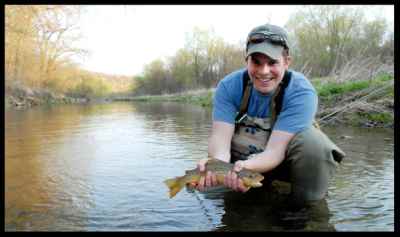DPA Magazine
Composing a Silhouette
I rarely shoot sunsets and even more rarely, silhouettes. While covering the California coastal town of Carpinteria for a local magazine, however, I found myself on the beach at sunset. Normally, I like to shoot subjects lit with sunset light, not the actual sunset, but the lifeguard tower had caught my attention. A young woman was sitting on the edge of the tower reading a book. When she stood up to watch the sun setting, I knew I had a good image. Moving a few feet to the side to place the sun partially behind the tower created a starburst. Composing the view down the beach while placing the silhouette of the lifeguard tower in the right third of the image gave me a greater feeling of depth. My model only stayed in that position for a couple frames, but it was long enough to give me one of the stronger images of the entire assignment. © 2007 Chuck Place, Los Angeles DPA Instructor
Freezing The Moment
While shooting a job for National Geographic Traveler Magazine in Cancun, Mexico, I arranged to shoot a sailboard instructor at one of the beach hotels. I had brought along with me an Ewa-marine underwater housing for my camera and decided to shoot in the water, using the nearby hotel as a background. © 2007 Chuck Place, Los Angeles DPA Instructor Sitting in three feet of water, I pre-set the exposure on my camera and arranged for the instructor to sail between myself and the afternoon sun. Light passing through a brightly colored sail is always more saturated that light reflected off a front lit sail. I made sure I had a fast enough shutter speed, about 1/250 of a second, to stop the action and fired off some frames every time I felt the sail pass in front of the sun. Professional photography is often a lot of work, but sometimes it’s also just plain fun.
Using Evening Light
There is a certain light that happens only on a summer evening. You know what I′m talking about, that light that makes everything glow. The "magic hour", whatever you choose to call it. Many things happen at this time of day. Wildlife becomes more active. Insects hatch on trout streams. And your cousin who hasn′t caught a fish all day finally fools a trout into taking his fly. When all these elements present themselves, be ready and you′ll come away with some memorable images. When photographing someone with a fish, on a lake or a stream, bring them close to water level. If they are wearing sunglasses have them take them off. Are they wearing a hat? Raise the bill a little so you can see their face. Is the sun at their back? Use a fill flash. Focus on the fish and recompose the image, let the person fall a little out of focus. Include the background by using a wider lens and getting closer to your subject, it gives the photo a sense of place. © 2007 Michael Dvorak, Minneapolis DPA Instructor Think of your photo as a small narrative of the moment. It may seem like a lot to think about, but the more you do it the more it just becomes second nature. And remember, these are just tips not rules.
Spring Light for Portraiture
Tip: Approach your potential subjects with a smile and ask if they wouldn’t mind if you took some photos of them. If you get a positive response, before you begin your image making, talk with your subject to make him or her feel relaxed. When you eventually raise the camera to your eye, you’ll be greeted with a warm smile. If it’s sunny, use a flash to soften the contrast and reveal detail in the shadow areas. If your camera doesn’t have flash capability, look for a shady area and try to eliminate bright areas in the background. What makes photographing so wonderful in the spring is people are coming out of winter hibernation and enjoying the great outdoors. This opens the door to making them more friendly and increases the potential of finding many subjects in the park. © 2007 Russ Burden, Denver DPA Instructor © 2007 Russ Burden, Denver DPA Instructor © 2007 Russ Burden, Denver DPA Instructor
Patience is a Virtue!
Patience is one of the most difficult yet rewarding virtues in making photographs. Hanging in while waiting for the light to settle down, literally, allows one to work in warmer light, with light that has direction. Add the preciousness of those last minutes of daylight and you have the makings for the extraordinary. This can work with the light behind...or in front of you. © 2007 Frank Siteman, Boston DPA Instructor
Get in Tight and Be Open to Unusual Angles
Most people want to turn this photo upside down, we are so accustomed to viewing faces in the "correct" angle. But the boy was about to go down a water slide, and was literally hanging in the opening getting blasted by the water as he prepared to let go and shoot down the enclosed slide. The "Radial Blur" tool in Photoshop enhanced the feeling of swirling down this chute. © 2007 Michael Hart, Houston DPA Instructor
Don′t be Afraid to Shoot into the Light
The old Kodak box instructions that said to have the sun behind you should be discarded! Backlight gives definition, and you don′t have Uncle Harry or Baby Mark squinting like crazy at you. But keep in mind that bright, specular reflections on the water will throw your in-camera metering system off-balance, and you will need to open up/increase exposure to compensate. And give your subject "room to look;" in the above there is more room in front of the child than behind. It also illustrates "the rule of thirds..." © 2007 Michael Hart, Houston DPA Instructor
Water Fowl Galore
Water Fowl Galore at Belmar Park - Lakewood, CO If you′re in the Denver, Colorado area and you′re looking to photograph water fowl or simply absorb the view of lots of different species, the 127 acre Belmar Park is the place to go. Located in the city of Lakewood, it′s only minutes from downtown Denver. Consisting of two lakes, the main one being Kountze, each offers its own rewards for the curious nature photographer. Turtles, barn swallows, white pelicans, raccoons, and many types of ducks are frequent visitors. Also commonly found are egrets, night herons, great blue herons, and avocets. Many of these species are seasonal, but if you head there in the spring, you′ll surely be treated to them all. Spring offers the added rewarded of seeing and photographing many baby animals. © 2007 Russ Burden, Denver DPA Instructor To get to Belmar Park from Denver, head west on the 6th Ave Freeway to Wadsworth Blvd. Go south for a few blocks to Ohio and make a right turn into the park. Get there early in the morning to make your images glow in the warm light of sunrise.
Using What You Have
Driving down the coast to Los Angeles, I stopped at County Line, a popular surfing spot above Malibu. The wind was blowing hard and the area had been taken over by sailboarders. © 2007 Chuck Place The longest lens I had with me that day was a 80-200mm f2.8 zoom, an extremely versatile lens, but not enough reach to capture all the wave jumping happening offshore. I had to settle for shooting sailboarders as they battled their way through the wind-blown shore break. Positioning myself high on a bluff, I cropped out the horizon to isolate the action and made sure the backlighting and white surf didn’t cause me to underexpose my images. The action was wild with some sailors getting knocked down as they tried to punch through the powerful waves. Sometimes, it turns out, you don’t need those super telephoto lenses to capture the action, just the right vantage point.
Patience, Patience, Patience
Tip: Patience, patience patience. This shot began as nothing more than an idea while covering a bike race, and required waiting close to an hour for the riders to pass beneath. It was an hour spent second-guessing the decision to wait in a parking lot while the race action was going on elsewhere, but to leave would mean missing the shot. In the end it was worth the risk. After the first riders came through in a tight bunch, a second pack came along with more even spacing - perfect for adding to the symmetrical composition of the bright yellow tree against the blue sky. A pack of bicycle riders in the Tour of the Tucson Mountains pass beneath a Palo Verde tree, in its full spring bloom of yellow flowers, on Avra Valley road, north of Tucson Arizona: © 2007 Chris Richards, Phoenix DPA Instructor





